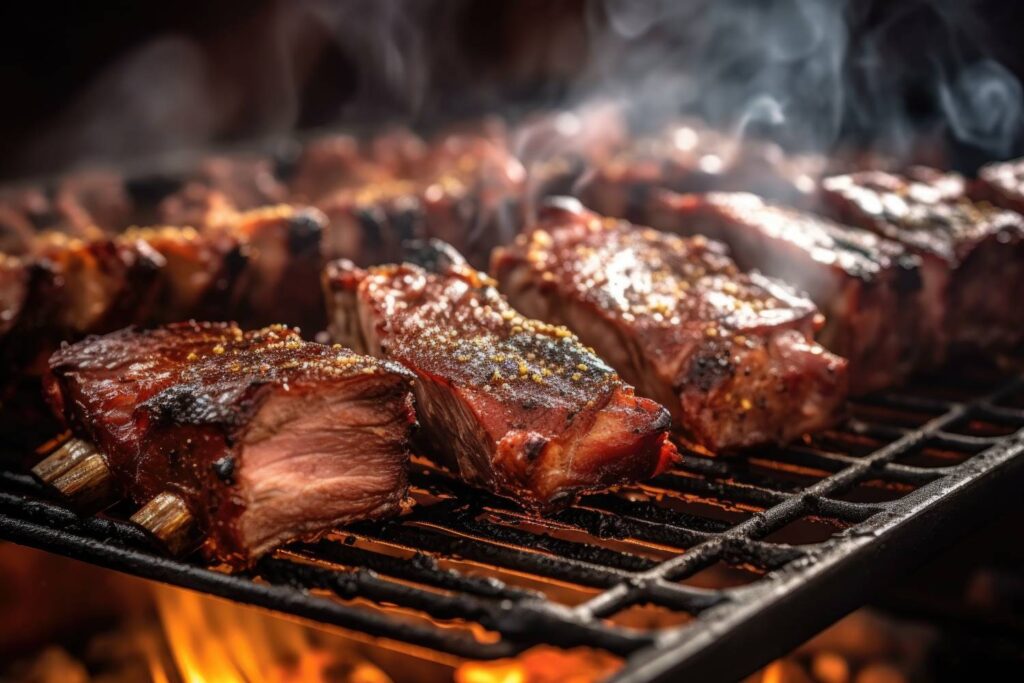
Smoking food is an art that enhances dishes with layers of rich, smoky flavours. Whether you’re new to smoking or a seasoned pitmaster, mastering the art of smoking at home will elevate your culinary game. Chef Abdul, a grilling and smoking enthusiast, often collaborates with Tandooriwala to craft smoky delights, sharing tips and techniques to bring that authentic flavour to your kitchen or backyard.
Here’s your ultimate guide to smoking food like a pro, covering everything from the right tools to essential techniques.
The first step to smoking success is selecting the right setup. Here are the most popular options:
Ideal for smoking enthusiasts, these come in various types, such as electric, pellet, charcoal, or wood. Dedicated smokers offer precise temperature control and consistent results.
A charcoal grill can double as a smoker, perfect for beginners. Add wood chips or chunks to the coals for a smoky aroma.
While not traditionally designed for smoking, a gas grill can be transformed using a smoker box filled with wood chips.
No smoker? No problem. Use a large pot or foil-wrapped wood chips to create a makeshift smoking chamber.
Chef Abdul’s Tip: “Start with a method that matches your comfort level. Charcoal grills are versatile and give great results for those new to smoking.”
The type of wood you use greatly influences the flavour of your smoked food. Here’s a quick guide:
Important Note: Avoid softwoods like pine or cedar, which produce unpleasant flavours.
Chef Abdul’s Insight: “Experiment with wood blends to create unique flavour profiles. At Tandooriwala, we often mix apple and hickory for a balanced, smoky aroma.”
Preparing food properly ensures it absorbs the maximum smoky flavour. Follow these steps:
Chef Abdul’s Tip: “Marinating overnight infuses the food with deep, complex flavours, giving that signature smoky taste.”
For a Charcoal Grill or Smoker:
For a Gas Grill:
For a DIY Setup:
Chef Abdul’s Tip: “Maintaining consistent heat is key to great results. Adjust vents or burners to keep the temperature steady.”
The secret to perfect smoking is maintaining a low, steady temperature between 225°F–250°F (107°C–121°C).
Chef Abdul’s Insight: “Low and slow is the mantra. Patience is crucial for achieving rich, smoky flavour.”
Smoking times vary depending on the type of food. Here’s a cheat sheet:
Internal Temperature Guide:
Chef Abdul’s Tip: “Always use a meat thermometer. Perfect doneness is the hallmark of professional smoking.”
Once your food is beautifully smoked, resist the temptation to slice immediately. Rest it for 10–20 minutes to allow the juices to redistribute, ensuring tender, flavorful results.
Pro Tips for Smoking Success
Chef Abdul’s Tip: “At Tandooriwala, we use charcoal smoking techniques to deliver authentic flavours that wow our guests. You can do the same at home with practice.”
Here are some classic dishes to kickstart your smoking adventure:
“Smoking food is more than just cooking—it’s an experience,” says Chef Abdul. “It’s about creating flavours that linger in your memory. At Tandooriwala, we embrace the art of smoking to craft bold, flavorful, and unforgettable dishes.”
With the right tools, techniques, and patience, you can master smoking food at home. The possibilities are endless: smoky chicken tikka, tender vegetables, or perfectly charred paneer. So, fire up your smoker, gather your ingredients, and bring the magic of smoky flavours to your table. Happy smoking!
Chef Abdul © Copyright 2024. All rights reserved.